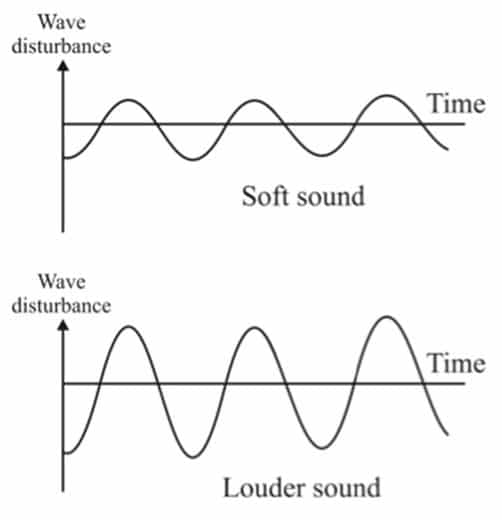What makes acoustic doors soundproof?
We thought that it was high time to revisit what actually makes a door soundproof, and to do this we’ll begin by reviewing what sound actually is before looking at how barriers (such as acoustic or soundproof doors) to the transmission of sound actually operate.
So what is sound?
Sound is a form of energy that is created when air is disturbed such that the air pressure changes and radiates from the source of the sound in waves.
These sound waves vibrate at different frequencies, and are measured in cycles per second (Hertz). The faster that a sound wave travels past a given point, the shorter is its wavelength and the higher is its frequency.
The “loudness” of the sound – which is a relative not an absolute term, and which is also impacted by other sounds – is caused by vibrations in the medium through which the sound is travelling (typically, in our experience, air). The stronger the vibrations, the greater the amplitude. Here’s a diagram to make things clearer:
So how do sound barriers operate?
A sound barrier simply reduces the amount of noise that can pass through it. You’ll be aware that closing a normal door will reduce the amount of noise coming through; similarly a standard fence will reduce noise coming from the other side. These will not stop all noise, of course – since sound waves flow like water they will find other ways of “getting through, or round” unless more sophisticated measures are taken. What might such measures be?
Sound insulation and sound absorption
Sound insulation is about putting up an acoustic barrier. Sound absorption describes the ability of materials to restrict the reflection of sound, doing this by converting the energy of the sound into heat. The greater the sound absorption the shorter the reverberation time or echo that is produced. Sound absorption is measured as a co-efficient from 0 to 1.0, with the best rating being 1.0.
For the most effective sound-proofing, you should consider using both mechanisms.
To put things into perspective, doubling the mass per unit area of a wall or door will improve its insulation by about 6 dB – this is why heavy materials such as concrete are very effective soundproofing materials. One way of achieving good insulation using less mass (since concrete doors can be unwieldy!) would be to use a double-leaf partition (two walls separated by an air gap filled with a sound absorber).
Put another way, sound insulation affects people in the room or workspace adjoining a sound source, while absorption affects those within it.
| Sound absorption | Sound insulation | |
| Control | Sound reflection within a room or workspace
|
Sound transmission between rooms or workspaces |
| Effect Upon | Performing and listening conditions
|
Privacy and disturbance |
| Benefits | Room or workspace occupants | Room or workspace neighbours |
As is so often the case, there are several things to think about when you are considering soundproof doors – what environment are you in, how much sound do you need to keep in/out, are there any legal requirements, what about preventing the spread of fire? – and so on.
So as always it’s important that you speak to the experts, who can give you sound (no pun intended) and practical advice based upon years of successful installations.









